1. Harness Technology for Curriculum, Assessment & Pedagogy
1.1. Design for deep learning, acquisition of 21CC and formative assessment
1.1.1. What is the role of ICT in the active learning process to bring about subject disciplinary and 21CC outcomes?
1.1.1.1. Activate Learning
1.1.1.1.1. Gives an opportunity for everyone to 'speak'
1.1.1.1.2. Multi-modal resources to trigger thinking
1.1.1.2. Promote Thinking & Discussion
1.1.1.2.1. Use an online platform to collaborate and contribute / build on each other's ideas e.g. Linoit
1.1.1.2.2. Make Thinking Visible
1.1.1.3. Monitor and Provide Feedback
1.1.1.3.1. Real-Time Feedback is provided
1.1.1.4. Facilitate Demonstration of Learning
1.2. What needs to be done in order for us to roll this out?
1.2.1. Teachers are not ready and they face many barriers in their way that they need to
2. Support Professional Learning with Technology to Nurture Collaborative & Reflective Practices
2.1. Identified knowledge and skills teachers need to have to design for active learning with technology (Refer to School Learning Log)
2.1.1. How do we tap on technology to design for differentiated professional learning and engender teachers’ ownership of learning?
2.1.2. How do we tap on technology to support teachers’ collaborative inquiry and professional discourse in learning teams?
2.1.2.1. Set up online communities / sites that supports cross-school collaboration
2.1.3. How can technology be harnessed to capture the shifts in classroom practices and chronicle teachers' learning?
2.2. ST3: Growing Competent and Engaged Staff
2.2.1. To have more drivers of ICT to share and extend the practice so that it is more pervasive throughout the school.
2.2.2. Growing a School Culture where ICT becomes a norm via routines, practices and messaging
3. Provide leadership on technology in learning
3.1. Direction on ICT Use
3.1.1. What are the goals, subject and 21cc outcomes as defined in our school?
3.1.1.1. Vision and Mission: encouraging staff and pupils to learn, understand and practise with an open and discerning mind and to serve with a gracious heart so as to contribute to society.
3.1.1.2. Values: Responsibility
3.1.1.2.1. Nurturing a future generation of useful and responsible citizens
3.1.1.3. Values: Respect
3.1.1.4. ST 1: Striving towards Excellence through Quality Programmes
3.1.1.4.1. SO 1.1: To develop quality programmes to promote deep learning and pupil engagement
3.1.1.4.2. SO 1.2 : To attain excellence through engaging and varied teaching pedagogies
3.1.2. What is the role of the teacher?
3.1.2.1. To have a high level of discernment as to when and how to use ICT; to look at the affordances of ICT rather than the tool itself
3.1.2.2. Learner: to be more proactive to learn, find out and try out; dare to fail and try again
3.1.2.3. Facilitator: how to teach ICT in the classroom
3.1.2.4. To be an expert in Content-Subject Mastery
3.1.3. What is the role of students?
3.1.3.1. Responsible ICT User
3.1.3.2. Sense of Ownership for Learning
3.1.3.3. Self-Directed, on task
3.1.4. What is the role of technology in supporting the following interactions?
3.1.4.1. student-student
3.1.4.1.1. peer feedback
3.1.4.1.2. forums, social learning wall
3.1.4.2. student-teacher
3.1.4.2.1. immediate feedback
3.1.4.2.2. out-of classroom feedback (anytime, anywhere)
3.1.4.3. student-content
3.1.4.3.1. flipped learning
3.1.4.4. teacher-content
3.1.4.4.1. sharing of resources
3.2. ICT-enriched Learning Environment
3.2.1. What are the digital resources and tools needed to meet varying needs of students and teachers?
3.2.1.1. Teachers
3.2.1.1.1. Technical Competency and how to troubleshoot
3.2.1.1.2. Setting up of classroom routines to enable effective learning via ICT
3.2.1.1.3. Technology is used for the customisation of Feedback for Differentiated Learning
3.2.1.2. Students
3.2.1.2.1. Cyberwellness; respect and responsibility
3.2.1.2.2. Plagarism
3.2.1.2.3. Baseline ICT standards
3.2.2. How can we design learning spaces to support student-centric pedagogies?
3.2.2.1. Infrastructural Support
3.2.2.2. Levels of ICT Competencies as a build up of tools over the course of 6 years
3.3. What is the role of technology to monitor and assess learning?
3.3.1. Use of Scaffolds to monitor and assess learning e.g. See, Think, Wonder
3.3.2. Data Plus to monitor students learning
3.3.3. Obtain immediate information to provide just-in-time feedback
